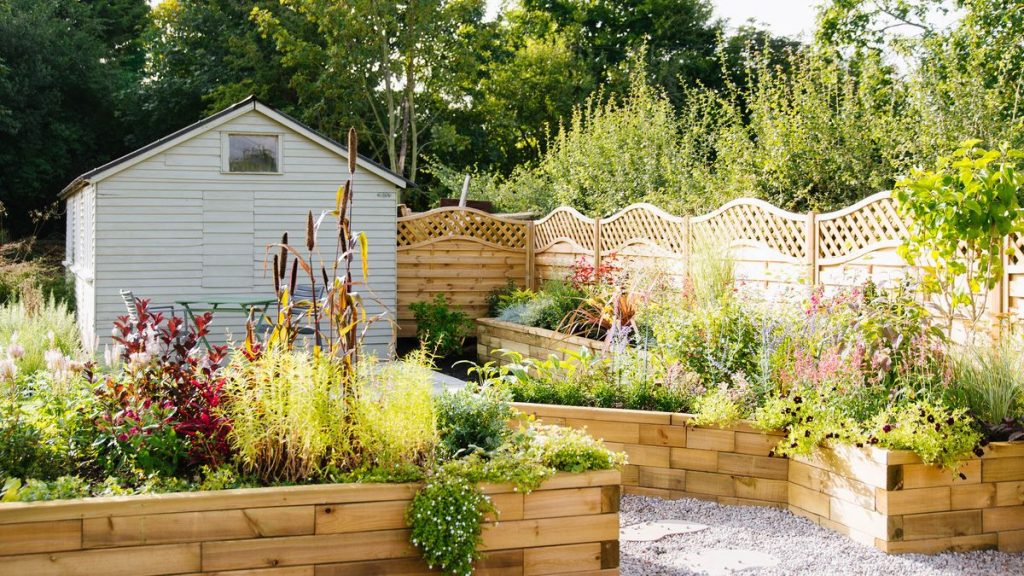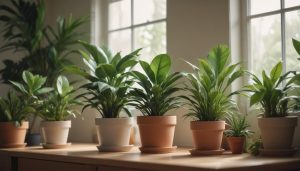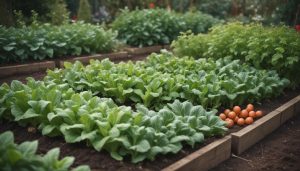How to Design a Sustainable and Low-Maintenance Garden
Daniel Fisher August 12, 2025
As more people turn towards sustainable living, the desire to design a garden that is both environmentally friendly and easy to maintain has grown. With climate change on the rise and water resources becoming scarce in some areas, low-maintenance gardens are not just a trend; they’re an essential shift towards more resilient ecosystems. The good news? You don’t need a green thumb to create a thriving garden. By choosing the right plants, materials, and techniques, anyone can build a sustainable garden that requires less work and resources to maintain.
In this guide, we’ll walk you through the key principles of designing a sustainable and low-maintenance garden. Whether you’re starting from scratch or transforming an existing space, these tips will help you create a beautiful, easy-to-care-for garden.

1. Choose the Right Plants for a Sustainable Garden
Focus on Native Plants
Native plants are naturally adapted to the local climate and soil, meaning they require less water, fewer fertilizers, and less overall maintenance. They also provide essential habitats for local wildlife, promoting biodiversity.
Some examples of drought-tolerant native plants include lavender, coneflowers, and ornamental grasses. Not only do they thrive with minimal effort, but they also reduce your garden’s environmental footprint.
Select Perennials Over Annuals
While annuals may look attractive, they require replanting each year, which increases maintenance and resource use. Perennials, on the other hand, come back year after year, saving you time, money, and effort. Examples of low-maintenance perennials include sedum, daylilies, and hostas.
Use Ground Covers to Prevent Weeds
Ground covers like creeping thyme, clover, or vinca minor can help suppress weed growth naturally, reducing the need for chemical herbicides and constant weeding. These plants also add texture and beauty to your garden.
2. Incorporate Smart Irrigation Systems
Drip Irrigation
A drip irrigation system is one of the most efficient ways to water your garden. Unlike traditional sprinklers, which waste water by spraying it over large areas, drip irrigation delivers water directly to the roots of plants, minimizing water loss.
If you’re in an area with water restrictions or just want to conserve water, installing a drip system can reduce water usage by up to 60% compared to overhead sprinklers.
Rain Barrels
Collecting rainwater is another eco-friendly way to water your garden. Rain barrels capture runoff from your roof and store it for later use, ensuring that your garden gets a sustainable water source without using potable water.
3. Mulch to Conserve Moisture and Prevent Weeds
Using organic mulch like wood chips, straw, or shredded leaves helps conserve moisture in the soil, reducing the frequency of watering. It also prevents weed growth, which cuts down on the time you need to spend pulling weeds.
Additionally, as the mulch breaks down, it adds valuable nutrients back into the soil, improving its quality over time.
4. Opt for Sustainable Hardscaping Materials
When planning your garden’s design, consider incorporating sustainable materials for paths, walls, and other hardscape elements. Opt for permeable materials like gravel, decomposed granite, or natural stone, which allow rainwater to penetrate the soil rather than running off into drains.
If you need fencing or structures, choose materials like recycled wood, bamboo, or locally sourced stone to reduce the environmental impact of your garden.
5. Install a Composting System
Composting is an easy way to recycle organic waste like food scraps and yard debris into valuable fertilizer for your garden. By composting, you reduce waste sent to landfills and create rich, nutrient-dense soil that will help your plants thrive.
Composting bins can be easily set up in a corner of your garden, and the process is low-maintenance once it gets going. Use a mix of greens (like grass clippings) and browns (like leaves) to balance the compost and keep it healthy.
6. Embrace Minimal Lawn Care
Traditional lawns are high-maintenance and require significant resources, from regular mowing to watering and fertilizing. Instead of a traditional lawn, consider alternatives like clover or low-growing ground covers, which require less water and mowing.
For larger yards, you can also opt for an eco-friendly lawn care service that uses organic methods to maintain your grass while protecting the environment.
7. Choose Low-Maintenance Garden Furniture
Once your garden is designed, think about furniture and accessories. Look for durable, low-maintenance options like metal, recycled plastic, or teak that can withstand the elements and require little upkeep.
If you prefer a natural look, consider repurposing old wood or other materials into DIY garden furniture for a unique and sustainable touch.
8. Use Sustainable Practices for Pest Control
Instead of relying on harsh chemicals, focus on natural pest control methods. Encouraging beneficial insects like ladybugs, bees, and predatory beetles can help keep harmful pests in check. You can also plant herbs like basil, garlic, and marigolds that naturally repel insects.
If pests become an issue, try organic solutions like neem oil or insecticidal soap, which are safer for the environment and your garden.
Conclusion
Designing a sustainable and low-maintenance garden is not only possible but also incredibly rewarding. By selecting the right plants, reducing water use, and embracing eco-friendly practices, you can create a garden that is both beautiful and functional. Whether you’re aiming for a minimalist look or a lush oasis, the principles of sustainability and low maintenance can guide you in designing the perfect garden. Sustainable gardens benefit both the environment and your lifestyle, offering long-term enjoyment with minimal effort. So, roll up your sleeves, get started, and watch as your eco-friendly garden grows with minimal effort, providing you with a beautiful, sustainable outdoor space to enjoy for years to come while fostering biodiversity and reducing your ecological footprint.
References
- American Society of Landscape Architects. (2022). Sustainable landscape practices: A guide for professional landscapers. American Society of Landscape Architects. Available at: https://www.asla.org (Accessed: 12 August 2025).
- U.S. Environmental Protection Agency. (2021). Green landscaping: A guide to planning and maintaining sustainable gardens. U.S. Environmental Protection Agency. Available at: https://www.epa.gov (Accessed: 12 August 2025).
- National Wildlife Federation. (2020). Creating sustainable gardens: Tips for eco-friendly landscaping. National Wildlife Federation. Available at: https://www.nwf.org (Accessed: 12 August 2025).







